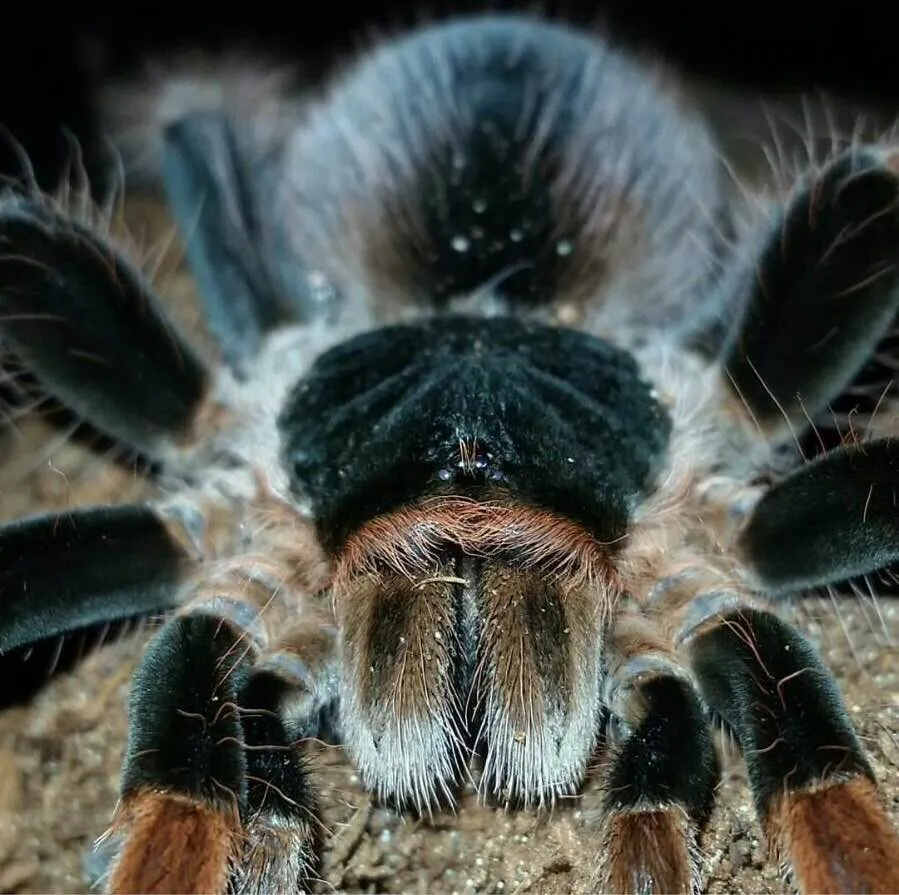The Colombian Giant Tarantula Size An Overview
The Colombian Giant Black Tarantula ( Megaphobema robustum) is one of the largest tarantula species in the world, captivating the interest of arachnid enthusiasts and casual observers alike. Understanding the size of these impressive creatures is key to appreciating their biology, behavior, and the care they require. This article delves into the various aspects influencing the size of the Colombian Giant Tarantula, providing a comprehensive overview of their physical characteristics, habitat, and factors affecting their growth. From leg span measurements to body length comparisons, we’ll explore everything you need to know about how big these giants truly get. Knowing the size of these spiders will help you understand their behavior.
Understanding the Colombian Giant Tarantula
Before discussing size, it’s crucial to understand the Colombian Giant Tarantula. These tarantulas are native to the rainforests of Colombia and Brazil, known for their impressive size and striking appearance. They are terrestrial spiders, meaning they spend most of their time on the ground. Their size is not just a matter of physical dimensions; it’s intertwined with their survival strategies, including hunting, predator avoidance, and overall ecological role. These spiders are nocturnal hunters, primarily active during the night. They are ambush predators, using their size and venom to subdue prey. Their large size is a significant advantage in their natural habitat, allowing them to capture larger prey items and defend themselves against potential threats. They are very interesting creatures that make great pets.
Physical Characteristics
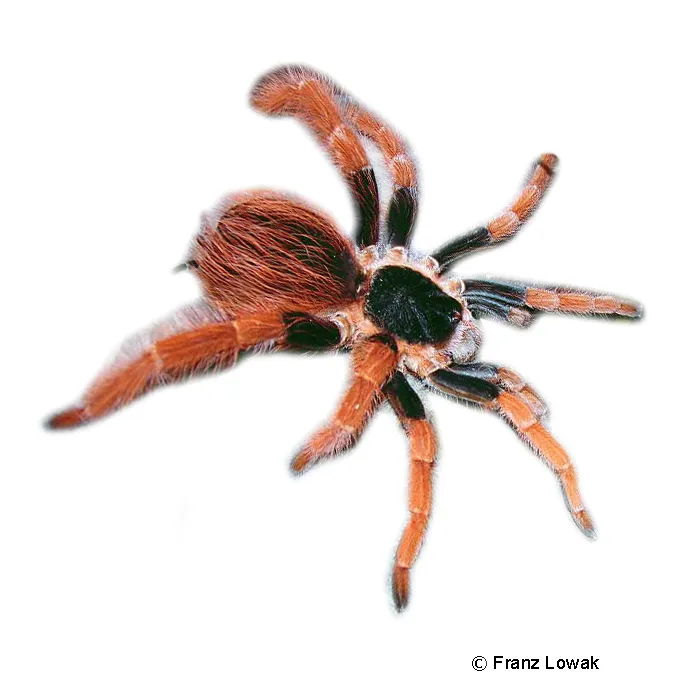
The Colombian Giant Tarantula is easily recognized by its large size and robust build. This is a spider that will definitely get your attention due to their size. Their bodies are covered in dense hairs, which provide sensory information and aid in defense. Their eight legs are thick and powerful, enabling them to move swiftly and climb moderately. These tarantulas also have a pair of chelicerae, or fangs, which they use to inject venom into their prey. The overall physical structure of the Colombian Giant Tarantula is well-adapted for its terrestrial lifestyle, making it a formidable hunter in its natural environment and a fascinating species for study and observation.
Coloration and Appearance
The coloration of the Colombian Giant Tarantula is typically a dark, rich brown or black, hence the name. This dark coloration provides excellent camouflage in their natural environment, helping them to blend in with the forest floor and undergrowth. The appearance of these tarantulas can vary slightly depending on the individual and its age, with some displaying subtle variations in shades of brown or the presence of reddish hairs. Their bodies are covered in a dense layer of urticating hairs, which they can flick off as a defense mechanism against predators. The overall appearance of the Colombian Giant Tarantula is both imposing and elegant, reflecting its status as one of the largest and most impressive tarantula species. Take a look at this amazing coloration of this amazing spider.
Habitat and Distribution
The Colombian Giant Tarantula primarily inhabits the rainforests of Colombia and Brazil. They are well-adapted to a humid environment, preferring a warm and moist climate. Understanding their natural habitat is crucial for replicating their needs in a captive environment. They are typically found in burrows or under logs and rocks, where they create retreats to rest, hide from predators, and ambush prey. The Colombian Giant Tarantula’s geographical distribution is limited to specific regions in South America, where the conditions are most suitable for their survival. If you are planning to keep them as pets, then you should check to see what their native habitat needs are.
Native Range
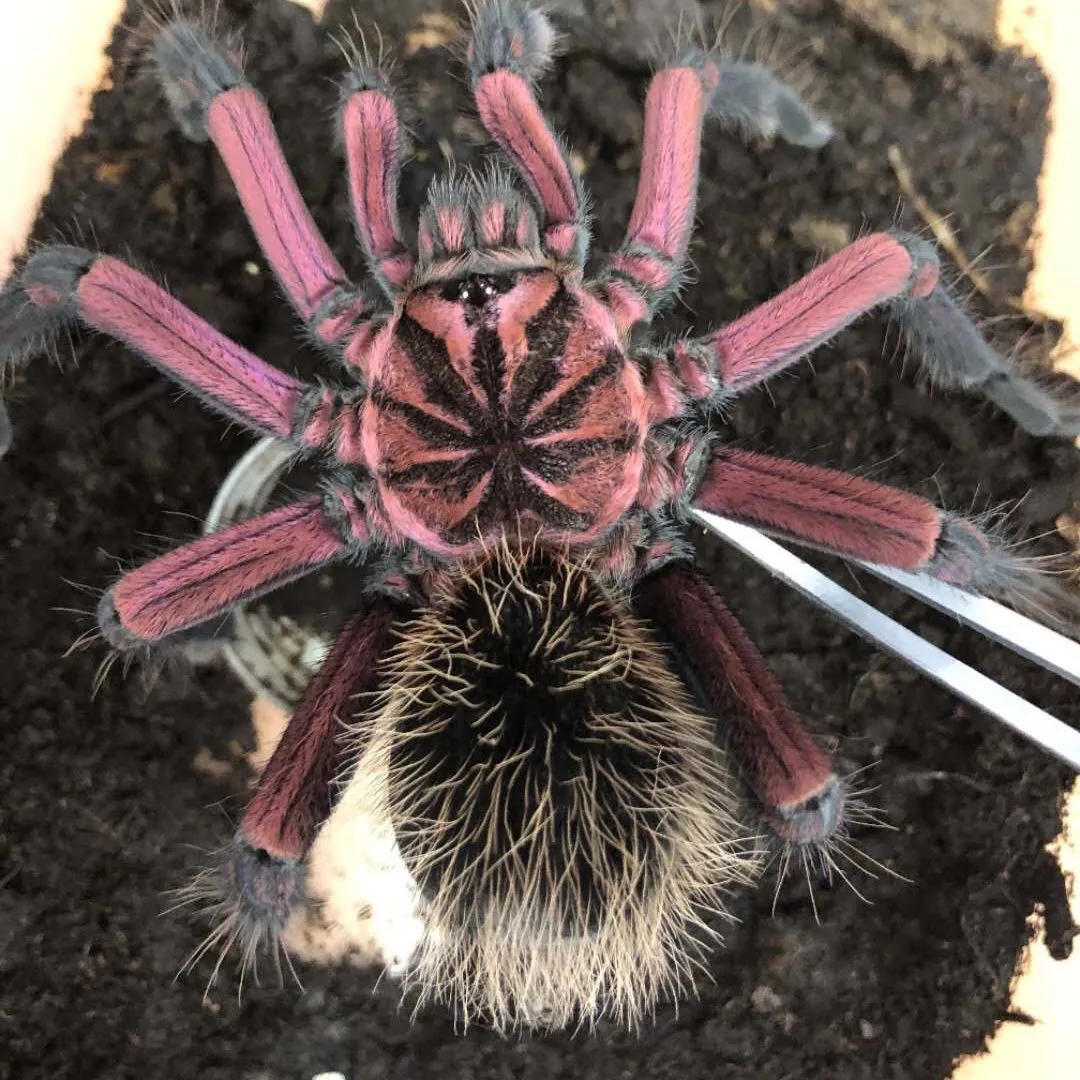
The native range of the Colombian Giant Tarantula is primarily concentrated in the rainforests of Colombia and Brazil. Within these regions, they are typically found in areas with high humidity, dense vegetation, and a rich forest floor. The specific habitats can vary, but they often include areas near rivers or streams where the soil is moist and supports a variety of prey items. Their distribution is not continuous, with populations often isolated due to geographical barriers or habitat fragmentation. Their natural range helps us understand the importance of conservation and the impact of environmental changes on their survival. They are an important part of their native habitat.
Preferred Environment
The Colombian Giant Tarantula thrives in a warm, humid environment with plenty of hiding places. They prefer temperatures between 75-85°F (24-29°C) and humidity levels of 70-80%. In their natural habitat, they seek shelter under logs, rocks, or in burrows, providing protection from the elements and predators. Substrates like peat moss or coco coir are ideal for maintaining humidity and providing a surface for burrowing. They also benefit from a well-ventilated enclosure to prevent the buildup of mold and bacteria. Understanding the preferred environment of this tarantula is essential for their care in captivity. If you are planning to have them as pets then this is important to consider for them.
Factors Influencing Size
Several factors influence the size of the Colombian Giant Tarantula, including genetics, diet, and environmental conditions. Genetic factors determine the potential size of an individual, while diet and environmental conditions play a crucial role in how closely the spider reaches its maximum potential. The size of a tarantula can also be affected by its overall health and the quality of care it receives. Providing an appropriate environment, a varied diet, and regular care can promote healthy growth and development.
Genetics and Breed
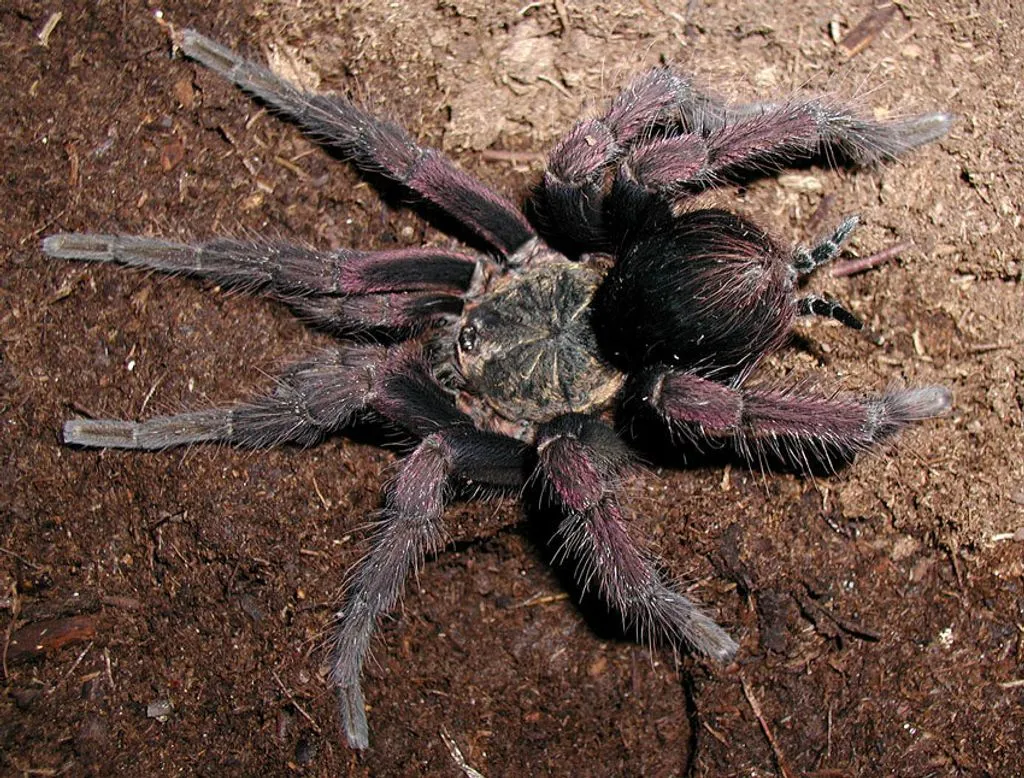
Genetic factors are a primary determinant of the size potential of a Colombian Giant Tarantula. Like all living organisms, individual tarantulas have inherent genetic predispositions that can affect their ultimate size. Selective breeding can influence size characteristics over generations, though this is less common in tarantulas than in some other species. The genetic makeup of a spider, passed down from its parents, plays a crucial role in determining the upper limit of its potential size. Ensuring that spiders come from healthy genetic lines is important for overall size and health. It is important to learn about your spider’s genetics.
Diet and Nutrition
The diet and nutrition of a Colombian Giant Tarantula significantly impact its size and overall health. In the wild, these tarantulas feed on a variety of insects, small vertebrates, and sometimes even other arachnids. In captivity, a balanced diet of appropriately sized insects, such as crickets, roaches, and mealworms, is essential for optimal growth. The frequency and amount of feeding should be adjusted based on the spider’s age and growth stage. Providing a varied diet ensures that the tarantula receives all the necessary nutrients to support healthy growth and development. Proper nutrition can help them reach their size potential.
Molting and Growth
Molting is a crucial process for the growth of the Colombian Giant Tarantula. During molting, the tarantula sheds its exoskeleton to accommodate its growing body. The frequency of molting depends on the spider’s age, with younger tarantulas molting more often than adults. Each molt allows the spider to increase in size, with significant growth spurts occurring during this process. The molting process is also a vulnerable time for the tarantula. It is important to maintain a stable and appropriate environment for a successful molt. Failure to do so can lead to issues like failed molts, which can be fatal. Properly caring for a tarantula during molting is vital for their growth.
Size Comparison
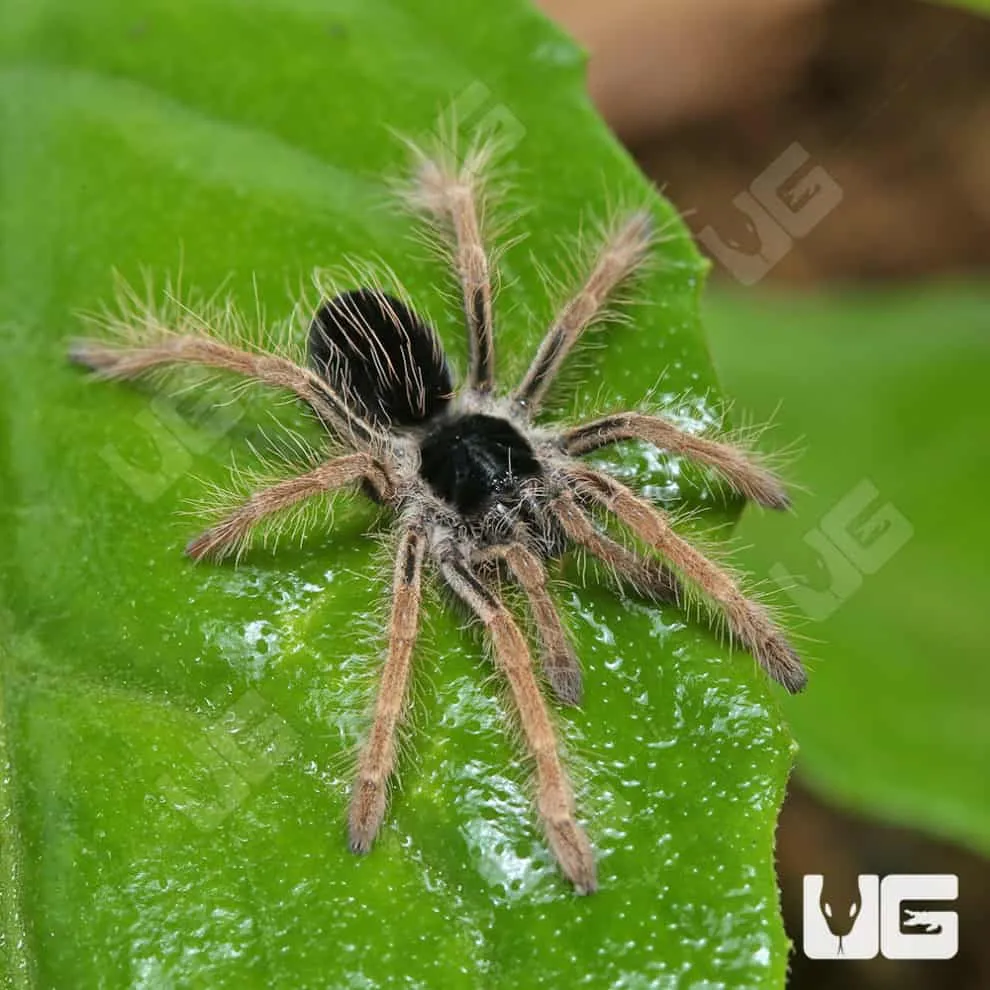
Comparing the size of the Colombian Giant Tarantula to other tarantula species and common household spiders provides a clearer perspective on its impressive dimensions. This comparison highlights the Colombian Giant Tarantula’s status as one of the largest spiders in the world and underscores the factors that contribute to its size advantage.
Against Other Tarantula Species
The Colombian Giant Tarantula is one of the largest tarantula species, often rivaling other giants like the Goliath Birdeater (Theraphosa blondi). While the Goliath Birdeater often has a slightly larger leg span, the Colombian Giant Tarantula can also achieve remarkable sizes. Compared to other popular tarantula species, such as the Mexican Redknee (Brachypelma hamorii), the Colombian Giant is significantly larger. This size difference is a result of genetics, habitat, and the specific adaptations that have evolved in the Colombian Giant Tarantula to thrive in its environment. The Goliath Birdeater is one of the largest spiders too, check it out.
Against Common Household Spiders
Compared to common household spiders, the Colombian Giant Tarantula is truly a giant. House spiders, such as the common house spider (Tegenaria domestica), typically have a leg span of only a few inches, a stark contrast to the Colombian Giant Tarantula’s potential size of up to 10 inches or more. This size difference highlights the differences in habitat, diet, and evolutionary adaptations. While household spiders are adapted to living in human environments, Colombian Giants have evolved to be formidable hunters in their natural habitat. The contrast emphasizes the exceptional size of the Colombian Giant Tarantula and the specialized adaptations that contribute to its impressive size.
Measuring and Assessing Size
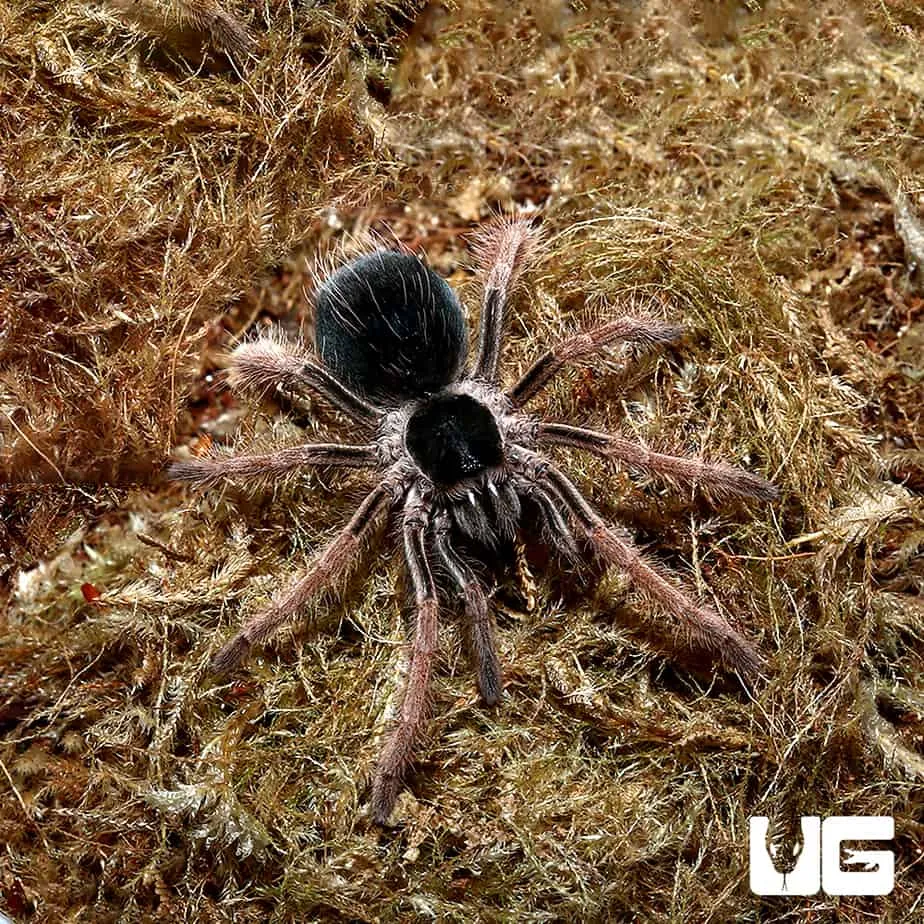
Accurately measuring and assessing the size of a Colombian Giant Tarantula requires specific techniques and considerations. The two primary measurements used are leg span and body length, each providing valuable insights into the overall size of the spider. These measurements are crucial for understanding growth, health, and comparing the tarantula to others of its kind.
Leg Span Measurements
Leg span is the most commonly used measurement for tarantulas. This is the distance from the tip of one leg (fully extended) on one side of the spider to the tip of the opposite leg on the other side, measured across the top of the body. Leg span gives an overall impression of the spider’s size. It is a useful metric for comparing tarantulas, although it can vary slightly depending on the spider’s posture and whether its legs are fully extended. It’s usually measured in inches or centimeters. Measuring the leg span gives a good indication of the tarantula’s overall size and how it compares to others.
Body Length Measurements
Body length is the measurement of the spider’s carapace (the top part of the cephalothorax) to the end of the abdomen. It’s a more direct measure of the spider’s body size, excluding the legs. Body length provides a sense of the mass and overall proportions of the tarantula. It is less susceptible to variations in leg posture than the leg span measurement. When assessing the overall size of a tarantula, body length offers a different perspective. It tells you more about the size of the spider’s body as opposed to the reach of its legs.
Conclusion
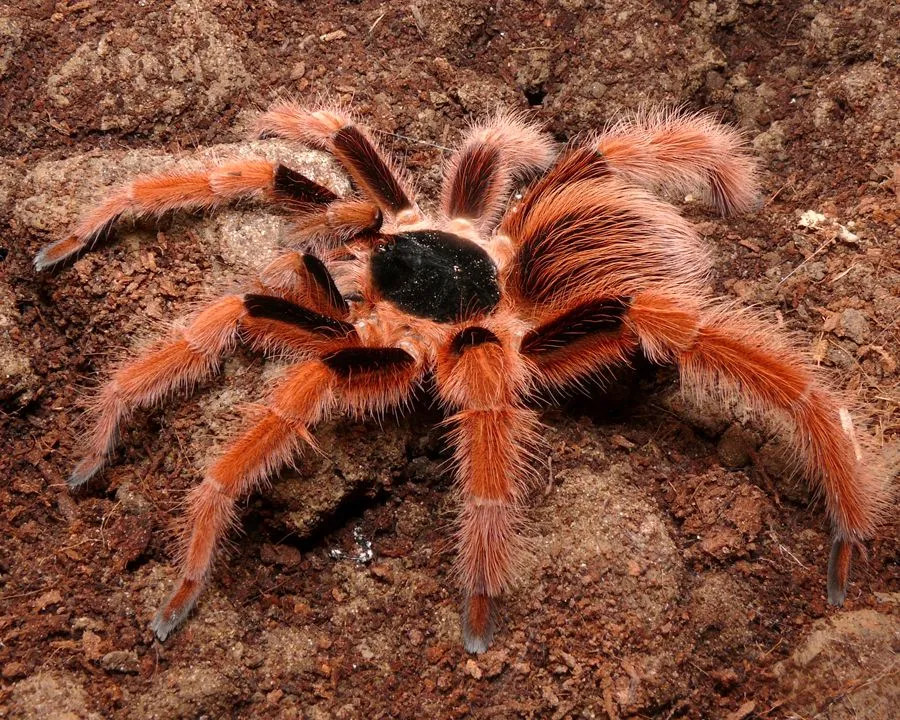
The Colombian Giant Tarantula is a truly impressive arachnid, remarkable not only for its size but also for its adaptability and beauty. Understanding the factors influencing its size – including genetics, diet, and environment – is essential for both appreciating the species and providing proper care. Whether you are an experienced arachnid enthusiast or a curious observer, the Colombian Giant Tarantula offers a fascinating window into the world of spiders. These spiders are beautiful creatures that should be respected.
